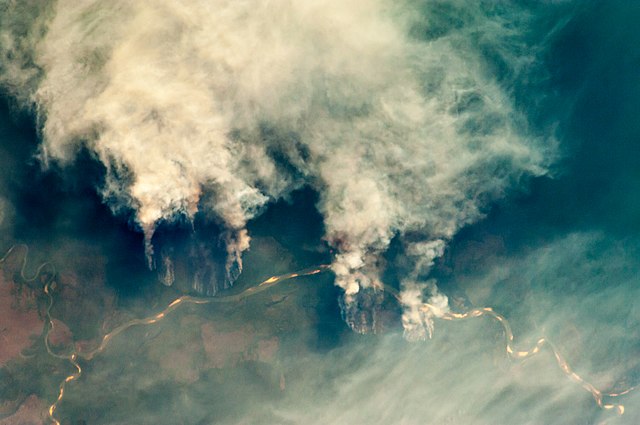Right to a healthy environment
The right to a healthy environment or the right to a sustainable and healthy environment is a human right advocated by human rights organizations and environmental organizations to protect the ecological systems that provide human health. The right was acknowledged by the United Nations Human Rights Council during its 48th session in October 2021 in HRC/RES/48/13 and subsequently by the United Nations General Assembly on July 28, 2022 in A/RES/76/300. The right is often the basis for human rights defense by environmental defenders, such as land defenders, water protectors and indigenous rights activists.
Slash and burn deforestation along the Rio Xingu, Brazil endangers both indigenous rights to the land as well as the larger right to a healthy environment. Case law like the Colombian Climate case protecting the Amazon forest from deforestation have historically relied on the rights of nature and children, the right to a healthy environment would provide additional protection.
A land defender, land protector, or environmental defender is an activist who works to protect ecosystems and the human right to a safe, healthy environment. Often, defenders are members of Indigenous communities who are protecting property rights of ancestral lands in the face of expropriation, pollution, depletion, or destruction.
2016 "Stand with Standing Rock" march. Slogans include "We are here to protect" and "Defend the land."


